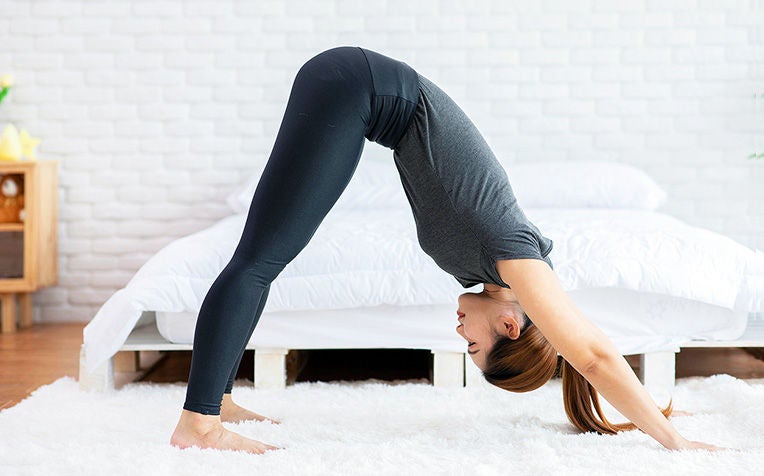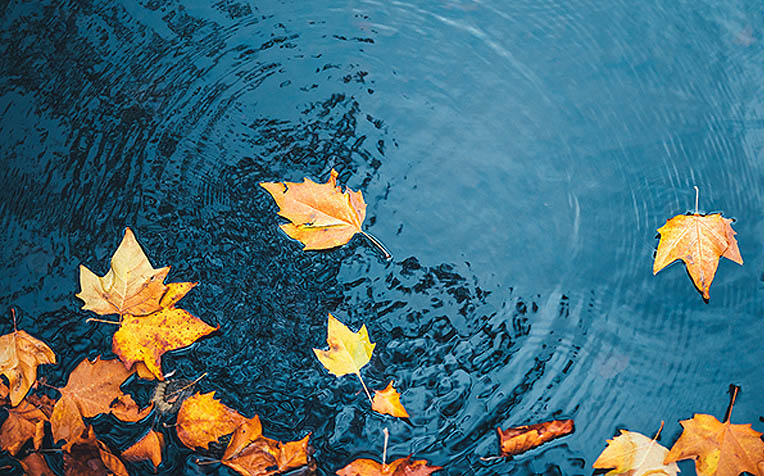
Doing yoga is also a form of relaxation response. A relaxation response is not just limited to meditation.
Information and video provided courtesy of the Government of Western Australia - Centre for Clinical Interventions (CCI).
What is a relaxation response?
The relaxation response is perhaps one of the most important skills you will use to gain control over your body. The National Institutes of Health (NIH) recognises the relaxation response as having broad health benefits including the reduction of pain and restoration of sleep.

In addition, research on the relaxation response has shown that this simple technique can: increase energy, decrease fatigue as well as increase arousal from a drowsy state. It can increase motivation, productivity, and improve decision-making ability. The relaxation response lowers stress hormone levels and lowers blood pressure.
The relaxation response is defined as your personal ability to make your body release chemicals and brain signals that make your muscles and organs slow down and increases blood flow to the brain. Drugs can do some of this for you, however they often have unwanted side effects. You can get your body to relax just as well without drugs while remaining conscious and aware at the same time. To be physically relaxed and mentally alert is the goal of the relaxation response.
The relaxation response is not:
![]() Laying on the couch
Laying on the couch
![]() Sleeping
Sleeping
![]() Being Lazy
Being Lazy
It is:
![]() A mentally active process that leaves the body relaxed
A mentally active process that leaves the body relaxed
![]() Best done in an awake state
Best done in an awake state
![]() Trainable and becomes more and more profound with practice
Trainable and becomes more and more profound with practice
There are many ways of achieving the relaxation response.
Some of these techniques are called:
Progressive muscle relaxation ('tense and relax')
Visual imagery
Deep breathing
Meditation
Hypnosis
Yoga
Biofeedback
![]()
Is one technique better than the other?
To date, there is no data supporting the idea that one method is any better than any other. What does matter is your willingness to use a particular technique for your own health and your ability to gain relaxation through that method.
We will discuss two different versions of the relaxation response: Progressive muscle relaxation (also known as 'tense and relax') and visual imagery.
What is progressive muscle relaxation (the 'tense and relax' technique)?
Everyone has a resting level of muscle tension. Some people have a great amount of tension at rest, others less. When people are under acute stress, their muscles tend to have higher levels of resting tension that can be painful and fatiguing. After you tense and relax muscles, the tension level not only returns to the original level, but will automatically drop below the original level, producing even greater relaxation to the muscles.
Start the exercise by getting comfortable
You can keep your eyes open or shut. Most people prefer to close their eyes
If you are wearing glasses or contact lenses, you may want to remove them before starting the exercise
Try not to fall asleep.
As you perform this exercise, you will tense different muscle groups above their normal level of tension
When tensing, you need not tense to the point of pain – simple tensing for 2 seconds is generally sufficient
Focus on how the tension feels. Then, let the tension go
Focus on the sensations of relaxation
Continue to breathe deeply and regularly throughout the exercise.
After you have become skilled at using this technique, you can repeat parts of it in a shorter format when you need a quick relaxation break. For example, when sitting in traffic, you can tense the muscles in your shoulders and upper back and then relax them to get a nice burst of relaxation.
How to do the 'tense and relax' technique
Purpose: to relax your body without the use of drugs
Goal: to tense and relax various muscle groups of the body to produce relaxation
Step 1: Begin deep breathing.
Step 2: Tense the muscle groups (as described below) and then relax them.
Preparation
Make yourself as comfortable as possible in a seated position
Try and sit up straight with good posture with your hands resting in your lap
Remove your glasses if you wear them, some people prefer to remove their contact lenses
Tensing and relaxing specific muscle groups
![]()
1. Relaxation of the feet and calves
Flex your feet (pull toes toward the knees)
Contract calf muscles and muscles of lower leg
Feel the tension build and hold the tension
Take a deep breath
As you exhale say the word “RELAX” and let the tension go
2. Relaxation of the knees and upper thigh
Straighten your knees and squeeze your legs together
Contract your thigh muscles and all the muscles of your legs
Feel the tension build and hold the tension
Take a deep breath
As you exhale say the word “RELAX” and let the tension go
3. Relaxation of the hips and buttocks
Tense the buttock muscles by squeezing them inward and upward
Feel the tension build and hold the tension
Take a deep breath
As you exhale say the word “RELAX” and let the tension go
4. Relaxation of the abdomen
Observe your abdomen rising and falling with each breath Inhale and press your navel toward the spine then tense the abdomen
Feel the tension build and hold the tension
Take a deep breath
As you exhale say the word “RELAX” and let the tension go
5. Relaxation of the upper back
Draw the shoulder blades together to the midline of the body
Contract the muscles across the upper back
Feel the tension build and hold the tension
Take a deep breath
As you exhale say the word “RELAX” and let the tension go
![]()
6. Relaxation of the arms and palms of the hands
Turn palms face down and make a tight fist in each hand
Raise and stretch both arms with fists
Feel the tension build and hold the tension
Take a deep breath
As you exhale say the word “RELAX” and let the tension go
7. Relaxation of the chin, neck and shoulders
Drop your chin to your chest
Draw your shoulders up toward your ears
Feel the tension build and hold the tension
Take a deep breath
As you exhale say the word “RELAX” and let the tension go
![]()
8. Relaxation of the jaw and facial muscles
Clench your teeth together
Tense the muscles in the back of your jaw
Turn the corners of your mouth into a tight smile
Wrinkle the bridge of your nose and squeeze your eyes shut
Tense all facial muscles in toward the center of your face
Feel the tension build and hold the tension
Take a deep breath
As you exhale say the word “RELAX” and let the tension go
9. Relaxation of the forehead
Raise eyebrows up and tense the muscles across the forehead and scalp
Feel the tension build and hold the tension
Take a deep breath
As you exhale say the word “RELAX” and let the tension go
10. Intensification of relaxation throughout the body
Focus on relaxation flowing from the crown of your head
Over your face
Down the back of your neck and shoulders
Down your body through your arms and hands
Over your chest and abdomen
Flowing through your hips and buttocks
Into your thighs, your knees and calves
And finally into your ankles and feet
Continue to deep breath for several minutes in silence
11. Completing the 'tense and relax' exercise
Count backwards in your head from 3 to 1
3 – become aware of your surroundings (location, people, noises)
2 - Move your feet, legs, hands, arms, rotate your head
1 – open your eyes feeling re-energised, refreshed, and relaxed
See the video below to learn about progressive muscle relaxation
Ref: K21


















 Get it on Google Play
Get it on Google Play